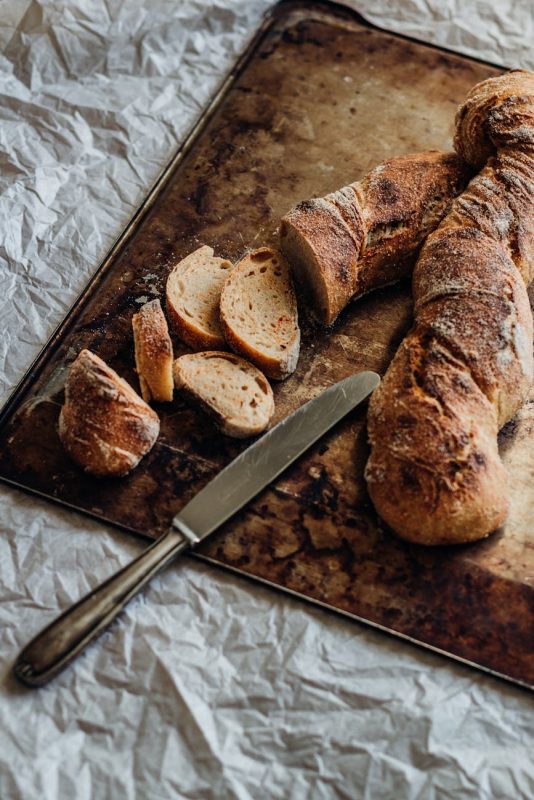Recipe
Beyond the Crust: The Culinary Science of Bunny Chow and Bread as a Vessel
Beyond the Crust: The Culinary Science of Bunny Chow and Bread as a Vessel
Picture this: a bustling market street in Durban, South Africa, the air thick with the aromas of turmeric, cumin, and coriander. Before you, a masterpiece of edible engineering – a hollowed-out quarter loaf of bread, brimming with rich, aromatic curry. This isn’t just a meal; it’s an experience, a cultural icon known as Bunny Chow. But as a master baker and food scientist, I often ponder: what makes the bread in a Bunny Chow so uniquely perfect for its task? It’s not just any loaf; it’s a robust, resilient vessel, designed to hold its liquid cargo without succumbing to sogginess, yet remaining tender enough to tear and dip. Many home bakers, and even some professionals, struggle with achieving this delicate balance – a bread strong enough to contain, yet delightful enough to eat.
This challenge is precisely where the intersection of culinary art and baking science truly shines. At MBICO, a leading manufacturer of high-quality bakery equipment, we understand that achieving professional results consistently relies on a deep understanding of ingredients and processes, supported by the right tools. By the end of this article, you will have a deep understanding of the scientific principles behind crafting the ideal bread for Bunny Chow and learn the exact techniques to apply these insights in your own kitchen, transforming your bread into a magnificent, edible container.
Bunny Chow: A South African Culinary Icon
My first encounter with Bunny Chow was during a culinary expedition to South Africa, a truly transformative experience. I remember being skeptical at first – bread as a bowl? But one bite, scooping up that vibrant, spicy curry with a piece of the sturdy yet yielding crust, convinced me. Its origins are often attributed to the Indian community in Durban, needing a convenient, mess-free way for laborers to carry and eat curries. The ingenious solution was a hollowed-out loaf, serving as both plate and utensil. This innovative “bread as a vessel” concept highlights bread’s incredible versatility beyond mere accompaniment. The key characteristics are clear: a sturdy crust to prevent leakage, a dense yet soft crumb to absorb the curry’s flavors, and a structural integrity that withstands the weight of its filling.
The Science of the “Vessel”: Crafting the Perfect Loaf
Creating the ideal bread for Bunny Chow isn’t just about mixing flour and water; it’s a precise dance of biochemical reactions and physical transformations. The goal is a loaf that is both absorbent and incredibly durable.
The Role of Wheat Flour: Gluten Development and Structure
At the heart of any good bread is its flour, specifically the protein content that forms gluten. For a robust bread vessel like Bunny Chow, you want a medium to high-protein bread flour. Gluten, developed through hydration and kneading, creates an elastic network that traps gases produced by yeast, giving the bread its structure and chew. In my years of running a professional bakery, I’ve found that an optimal kneading time—enough to develop a strong gluten network without overworking it—is critical. Too little kneading, and your bread will crumble; too much, and it becomes tough. We’re looking for a dough that passes the “windowpane test,” indicating sufficient gluten development for a sturdy crumb capable of holding a heavy, saucy filling.
Fermentation: Flavor, Texture, and Rise
Fermentation is the soul of bread, where yeast consumes sugars, producing carbon dioxide and alcohol, which contribute to the loaf’s rise and complex flavor profile. For Bunny Chow, a well-controlled fermentation is vital. A longer, colder proof (fermentation) can develop deeper flavors and a more resilient crumb structure, allowing the gluten network to relax and strengthen slowly. While some bakers swear by a long cold ferment, others achieve great results with a shorter, warmer proof. Here’s the science behind both: a cold ferment encourages enzymatic activity that breaks down starches into more fermentable sugars, enhancing flavor. A warmer, shorter ferment accelerates yeast activity, leading to a quicker rise. For our vessel bread, a balanced approach ensuring good flavor development and structural integrity is paramount.
Baking for Resilience: Achieving the Ideal Crust and Crumb
The transformation within the bakery oven is where the magic truly happens. High initial temperatures are crucial for “oven spring” – the final burst of expansion as gases rapidly expand. Introducing steam at the beginning of the bake delays crust formation, allowing the bread to expand fully and creating a thinner, crispier crust. As the baking continues, the Maillard reaction occurs, responsible for the bread’s golden-brown color and complex, savory flavors. For Bunny Chow, we want a crust that is firm enough to act as a barrier but not so hard that it’s difficult to tear. A slightly longer bake at a moderate temperature after the initial high heat can help achieve a thicker, more stable crust and ensure the crumb is cooked through and robust enough to prevent leakage.
Beyond Bunny Chow: Expanding Your “Bread as a Vessel” Repertoire
The principles we apply to Bunny Chow extend far beyond its South African roots. Think of classic soup bowls made from sourdough, rustic trenchers for medieval stews, or even modern takes on bread-based tapas. Understanding how flour, fermentation, and baking temperatures influence the structural integrity and absorbency of bread allows you to innovate. Whether you’re serving a hearty chili in a sourdough boule or a creamy spinach dip in a carved cob, the goal remains the same: a delicious, functional vessel. This also applies to a variety of cooking applications, from traditional loaves to those prepared in pizza and food ovens, where the bread itself can become a central component of the dish.
Mastering Your Craft with the Right Tools
Consistent, high-quality baking requires not only skill and scientific understanding but also reliable bakery equipment. From precise dough mixers that ensure even gluten development to ovens that maintain exact temperatures for perfect crust formation, the right tools empower you to execute your vision flawlessly. Invest in good quality measuring tools, a reliable stand mixer if you bake frequently, and understand your oven’s quirks. Experiment with different flours – a strong bread flour will always serve you best for a vessel bread. Most importantly, pay attention to the dough. It will tell you what it needs through its feel, elasticity, and aroma. Observation and adaptation are a baker’s best friends.
Conclusion
From the bustling streets of Durban to your home kitchen, Bunny Chow stands as a testament to bread’s incredible versatility. Crafting the perfect edible vessel requires a thoughtful approach to flour selection, meticulous control over fermentation, and precise baking techniques to achieve that crucial balance of strength, absorbency, and tenderness. By understanding the science behind gluten development, yeast activity, and the Maillard reaction, you can elevate your bread-making from a simple task to a profound culinary art. This weekend, try adjusting your dough’s hydration by 2% and observe the difference in the crumb of your next bread bowl or Bunny Chow loaf. Happy baking!







Explore MBICO's categories
Bakery equipment
13 Products
bulk and semi-bulk bread baking ovens
3 Products
Bulk Breads Baking equipment
14 Products
Confectionery equipment
7 Products
Mini ovens
3 Products
Pizza and food ovens
4 Products
Baking equipment
25 Products
Bakery oven
5 Products
Tafton baking ovens
3 Products
Barbari baking ovens
4 Products
Sangak bakery ovens
3 Products
Lavash baking ovens
3 Products
Pastry and confectionery ovens
3 Products
Baking ovens
10 Products
Mobile baking machines
4 Products
Explore MBICO's products
Bread Slicing Machine
4-Roll Dough Sheeter
Kitchen trailer
Bread & Sugar Grinder
Automatic Production Line for Baking Sangak Bread
Rimok Bakery
Convection Oven
Spiral Mixer